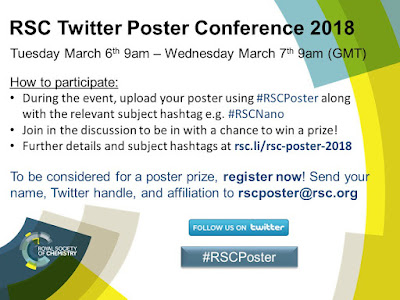Link roundup for March 2018

Animate Science has a “done in one” blog post about how to design a poster . Readers of the blog will find a lot of advise there familiar, but it’s very well done. It’s a much better “single serve” post than this blog is. (It’s not fair to expect newbies to read through nine years of posts.) I might do a few things in their sample a little differently, though. Why put that big, eye-popping octopus picture down in the corner? And those dark colours might not be very readable if the lighting is poor. • • • I’ve discussed accessibility issues with poster presentations before. But Sara Schley, writing for Inside Higher Education , argues that posters can, in some cases, be superior formats for students with accessibility issues: Consider a poster session . Many faculty members assign individual or team presentations as a culminating activity at the end of the term. The learning goals of such activities often include student synthesis of information, oral presentation and writing. But the e...




